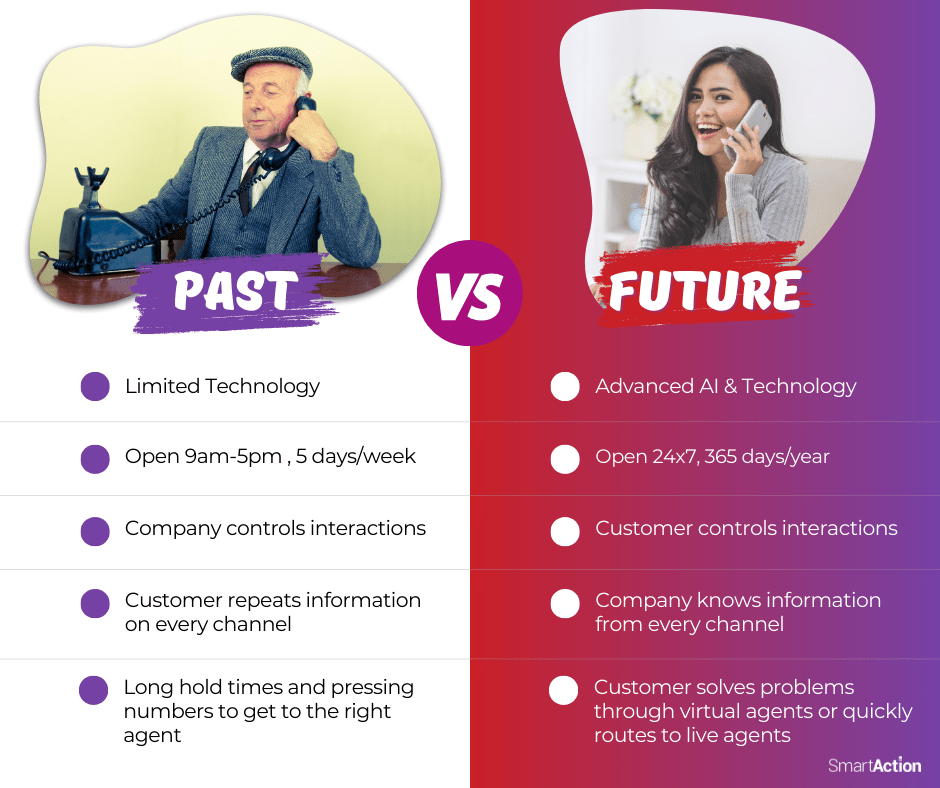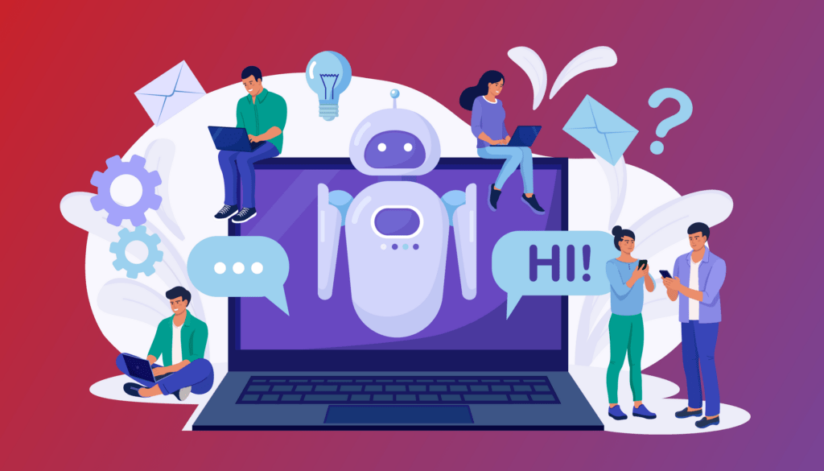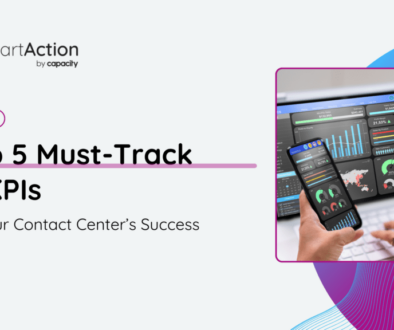The State of Customer Self-Service Today
In today’s fast-paced business landscape, customer self-service has become a pivotal aspect of delivering exceptional customer experiences. As we look towards 2024, the world of customer self-service is at a crossroads, with new challenges and opportunities on the horizon. Let’s explore the evolution of customer self-service, key trends for 2023, the benefits it offers, the challenges businesses face, and a glimpse into the future of this essential component of modern business operations.
The Evolution of Customer Self-Service
Customer self-service has come a long way since the days of waiting on hold for assistance from traditional call centers. With the advent of the internet, AI, and technological advancements, it has transformed into a multifaceted solution that empowers customers to find answers and solutions on their own. The evolution of self-service reflects the ever-changing landscape of technology and consumer expectations.

Key Trends in Customer Self-Service
1. AI-Powered Voice Self-Service
AI-powered voice self-service is revolutionizing the way customers seek help. Instead of waiting on hold or navigating through complex IVR menus, customers can now initiate support requests using their voice. Whether it’s troubleshooting technical issues, tracking orders, or resolving queries, voice self-service simplifies the process. With today’s technology, the top conversational design companies are now creating, “How can I help you today?” rather than “Would you like to schedule a new appointment or update an existing one? Or is it something else?” Underpinned by state-of-the-art technology, you can now have a conversation with virtual agents who will understand customer needs and address them quickly.
2. AI-Powered Chatbots
AI-driven chatbots have evolved into sophisticated virtual assistants. They provide real-time assistance, understand natural language, and offer personalized solutions. Businesses are increasingly turning to AI chatbots to enhance customer support, leading to improved response times and 24/7 availability. Customers can now get answers to their questions and resolve issues without human intervention, improving overall efficiency and customer satisfaction.
3. Omnichannel Support
Customers expect seamless self-service experiences across various channels, including websites, mobile apps, social media, and more. Businesses that provide consistent and integrated self-service options across these channels stand out. The ability to access self-service resources wherever and whenever customers need them enhances convenience and fosters customer loyalty.
4. Voice and Natural Language Processing (NLP)
Voice-activated self-service options and NLP technology are gaining prominence. Voice commands and NLP enable customers to interact with self-service systems in a more natural and intuitive way. Whether it’s using voice dialog on a phone-based support call or having a conversation with a chatbot online, these technologies simplify the self-service process and improve user satisfaction.
5. Self-Service Analytics
Data analytics plays a crucial role in refining self-service strategies. Now more than ever, businesses are leveraging data-driven insights to anticipate customer needs better, optimize content and resources, and enhance the overall user experience. By analyzing customer interactions with self-service platforms, companies can make informed decisions that lead to more effective self-service solutions.
6. Personalization and Recommendation Engines
Personalization is a key trend in customer self-service. Businesses are tailoring self-service content and recommendations to individual customer preferences. Recommendation engines analyze customer behavior and preferences to suggest relevant articles, products, or solutions. This level of personalization enhances customer engagement and drives sales.
7. Self-Service Security
With the rise in cyber threats, cybersecurity in self-service platforms continues to be a growing concern. Businesses are taking proactive measures to ensure the security and privacy of customer data during self-service interactions. Implementing robust security protocols and educating customers about safe self-service practices are top priorities. Ensuring any partners you work with are PCI and SOC2 compliant, GDPR and HIPAA (if applicable), can ensure that all customer data remains safe and secure.
Types of Customer Interactions Customer Self-Service Can Resolve
There are many different types of customer inquiries and requests that you are able to easily automate. Giving customers greater control of the information and resolutions helps them to feel empowered by your company – not isolated. How many of these options could your business use?
- Scheduling & Reservations – Empower customers to schedule appointments, service calls, or reservations at their convenience 24 hours a day, and keep them on-time with voice and/or text reminders.
- Account & Membership Information – By seamlessly integrating with your CRM or ERP, virtual agents use natural language processing (NLP) to help customers update their account, claim rewards, reset passwords, and much more – all the things live agents do.
- Billing & Payments – Immediately recognize and greet customers by name, authenticate, review past transactions, identify banking information, securely accept credit card info, and much more with AI automation.
- Collections – Whether it’s leaving a voicemail or negotiating payment arrangements, minimum one-time payment, or payment in full, virtual agents handle both outbound and inbound collections to decrease collections overhead while remaining TCPA compliant.
- Registration & Warranty – Automating the warranty and registration process can help customers protect their products up to 30% faster than working with a live rep.
- Authentication – Offload routine data-gathering calls by automating your authentication process which can collect any data type, from alphanumeric strings to names and places – all connected to your CRM or ERP.
- Claims – Allow customers to file a claim, check the status of a claim, review policy information, and more by bringing automation into your claims process.
- FAQ & Knowledge Bases – Customers can find answers to frequently asked questions such as store locations/hours, directions, parking information, policy information, and more.
- Order Management & Status Updates – Enables customers to track the status and location of their orders in real time, capture order numbers and product names, deliver confirmation receipts, and more.
The Benefits of Effective Customer Self-Service
Effective customer self-service offers numerous benefits. It leads to improved customer satisfaction as customers can find answers quickly and conveniently. Here are some benefits your business can actualize:
- Improved Customer Satisfaction: Quick access to information and self-help options leads to happier customers who can resolve issues independently.
- Cost Savings: Self-service reduces the need for extensive human support, resulting in lower support costs for businesses.
- Enhanced Efficiency: Customers can find answers and solutions faster, reducing response and resolution times.
- 24/7 Availability: Self-service is available round-the-clock, ensuring customers can seek assistance at any time, even outside of business hours.
- Personalization: Self-service platforms can tailor content and recommendations to individual customer preferences, creating a more engaging experience.
- Reduced Workload for Human Agents: Routine inquiries can be handled by self-service, freeing up human agents to focus on complex issues that require their expertise.
- Consistency: Self-service ensures consistent information and support across various channels, leading to a unified customer experience.
- Data-Driven Insights: Self-service analytics provide valuable data for refining support strategies and anticipating customer needs.
- Accessibility and Inclusivity: Self-service options, including voice-activated systems, promote accessibility and inclusivity for a broader audience.
- Faster Issue Resolution: Customers can often resolve issues more quickly through self-service, reducing frustration and improving brand perception.
- Empowerment: Self-service empowers customers to take control of their support journey, increasing their confidence in the brand.
- Scalability: Self-service solutions can easily scale to accommodate growing customer demands without a linear increase in support resources.
- Enhanced Customer Loyalty: A well-implemented self-service strategy can foster customer loyalty by providing convenient and efficient support options.
Future Outlook
Looking ahead, the future of customer self-service holds exciting possibilities. Emerging technologies like augmented reality (AR) and virtual reality (VR) may revolutionize self-service interactions, offering immersive experiences that help customers troubleshoot problems or explore products. Machine learning will continue to refine personalization, making self-service even more intuitive. Additionally, businesses must remain agile and adapt to evolving customer expectations and technological advancements to stay competitive.
Conclusion
In the ever-evolving landscape of business, customer self-service remains a critical component of delivering exceptional customer experiences. As we journey forward, the key trends in customer self-service, from AI-powered chatbots to omnichannel support and self-service analytics, present businesses with incredible opportunities to enhance customer satisfaction and operational efficiency. While challenges exist, they can be overcome with the right strategies and technologies. By staying ahead of the curve and embracing innovation, businesses can position themselves for success in the future, reaffirming the importance of customer self-service as an integral part of modern business operations.






